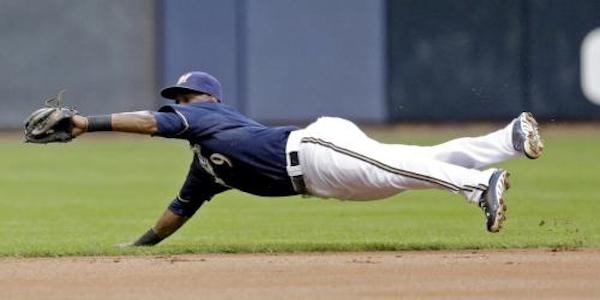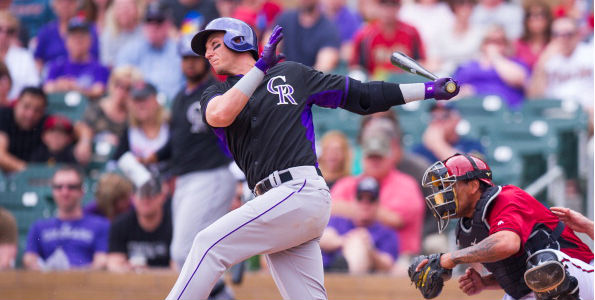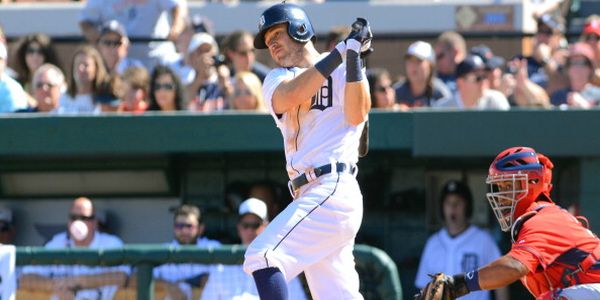2014 Fantasy Baseball: Gerard’s Rankings, An Introduction

Drafting a fantasy baseball team is a frighteningly complex exercise. The goal of any fantasy baseball rankings system should be to make the process of building a balanced, competitive team and smooth and simple as possible.
So I’m going to try to do that.
Why They’re Different
These rankings aren’t going to look like rankings normally do because the way fantasy baseball rankings typically look is boring, uncreative, and limited. They won’t be quite as linear because a successful fantasy draft isn’t as simple as just choosing the next guy in line.
Unlike fantasy football, fantasy baseball isn’t just about accumulating points (unless you’re in a points league, in which case you can probably stop reading), it’s about balancing the strengths and weaknesses of flawed players, especially later in the draft. At that point, fantasy value isn’t an absolute quantity, it varies wildly depending on your roster construction. Mark Trumbo is a worthwhile player in a vacuum, but if you’ve already landed Prince Fielder or Chris Davis to beef up your power numbers, Trumbo just doesn’t add as much value as he otherwise would.
They’re also not going to be projections. Part of reason for this is that I’m a much better writer than I am a mathematician, but in addition to that, I think a simpler approach will be more useful for a draft.
Drafting based on a specific projection of each stat means drawing to a specific number. You decide before the draft how many homers, steals, wins, etc. you’ll need to compete in each category and then go out and draft/buy that production. That’s fine, but I think it puts too much stock in the accuracy of a given projection system as well as in the assumption that you can accurately predict the totals that you need to reach. Systems like ZiPS or PECOTA are great at projecting a player’s overall value; they’re not so great at projecting specific stat totals. That’s not because those systems are bad, it’s because there is a ton of statistical noise that makes projecting specific stat totals really friggin’ hard.
So, instead of drawing to 200 steals or 1,100 runs, I’d rather just draft as many players as I can that I can reasonably expect to deliver better than average production in each category.
Z-Scores
The goal of my rankings isn’t to project production, it’s to approximate relative skill. To do that, I’m using z-scores to calculate how much better (or worse) a given player is than average, taking into account his performance relative to the average for his position group as well as the average for all players. Since the z-scores are a relative measure, rather than an absolute one, this approach helps to cancel out any year-to-year adjustment in overall category production. Regardless of whether speed dries up or power explodes, I’ll be fine if I’ve built a team with solid z-scores across the board.
I’m not going to spend much space detailing how I came up with this numbers, since most of you probably don’t care. I’ll just say that I combined last year’s stats, an average of the two years prior, and Steamer projections, then came up with a number for each category based on performance in that category, as well as performance in leading indicators for that category. For instance, a player’s score in home runs not only includes his home run total, but also his total extra base hits, his fly ball and line drive rates, and his ISO.
Differences by Position
The one caveat to offer here is to consider the relative strengths of each position group in generating particular statistics. The chart below shows how many standard deviations above average each position group falls in each statistical category:
|
1B |
2B |
3B |
C |
OF |
SS |
|
|
R |
0.26 |
-0.09 |
-0.06 |
-0.19 |
0.14 |
-0.26 |
|
HR |
0.44 |
-0.17 |
0.22 |
0.02 |
0.00 |
-0.40 |
|
RBI |
0.46 |
-0.20 |
0.27 |
0.02 |
-0.04 |
-0.35 |
|
SB |
-0.26 |
0.02 |
-0.25 |
-0.32 |
0.20 |
0.17 |
|
AVG |
-0.04 |
0.22 |
0.08 |
-0.10 |
-0.05 |
0.15 |
There aren’t (and shouldn’t be) any surprises here. First basemen are great at producing power numbers, outfielders and middle infielders are the best sources of speed, and catchers are generally bad at pretty much everything.
In practice, this means that not all z-scores are created equal. Paul Goldschmidt is great at swiping bags relative to other first basemen, but his positive z-score in steals isn’t quite as valuable as Mike Trout’s, who excels even within a position group that generates stolen bases more than any other. Keep this in mind when you’re drafting.
How to Use These Rankings
So, I promised simplicity, then spent 700 words in the weeds. Sorry about that.
Luckily, the application of these rankings is much simpler than their development.
For each position group, I’ll identify a top two or three tiers of players who either offer elite production (more than 1.50 standard deviations above average) in one particular category, or significantly above average production in several categories. Theses are the early round, high priced cornerstones of your team.
From there, each position group is divided up based on category strengths. I’ll individually rank the best options for runs, home runs, RBI, stolen bases, and batting average.
At this point, the differences in overall production are significantly reduced; your main goal should be finding players that best complement your cornerstones. For instance, if you’ve spent the majority of your auction budget on Miguel Cabrera at third base and Troy Tulowitzki at shortstop, you should look to outfielders who you can expect to produce more stolen bases. In a vacuum, Alex Gordon is more valuable than Leonys Martin, but in this case, you’d much rather have Martin.
Why This Is Better
It’s going to take a little bit of getting used to, but I promise this will help you build a better team. It’ll lead you to drafting players with complementary skill sets, preventing logjams that will force your hand in trades.
In the immortal words of Kurt Russell portraying coach Herb Brooks, “We’re not looking for the best players, we’re looking for the right ones.”
You check out the rankings here:






